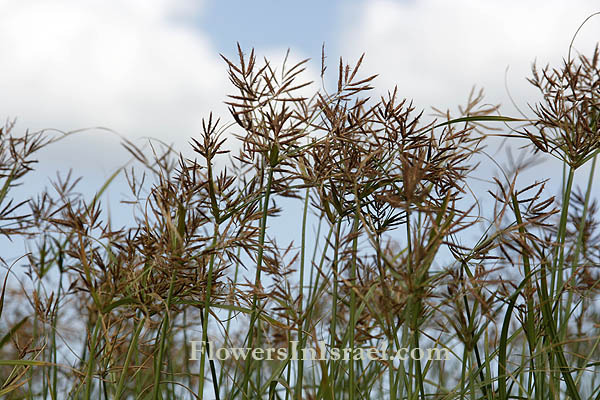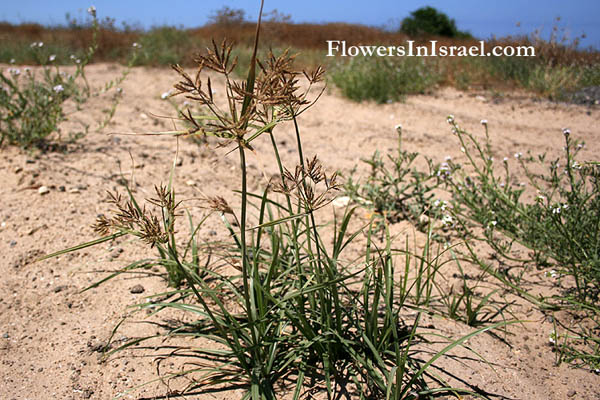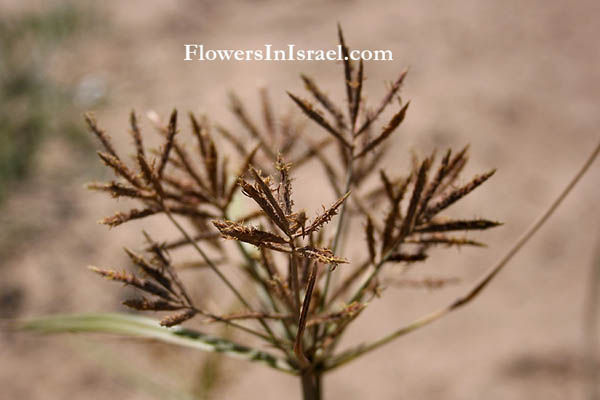Hebrew: גומא הפקעים, Arabic: حشيشة السعيد, Egypt: سعد "Se'd"
| Scientific name: | Cyperus rotundus L. | |
| Common name: | Coco nut-grass | |
| Hebrew name: | גומא הפקעים | |
| Arabic name: | حشيشة السعيد | |
| Egypt: | سعد "Se'd" | |
| Plant Family: | Cyperaceae, גמאיים |

|
| Life form: | Geophyte | |
| Stems: | 30-40 cm in height; smooth, erect, triangular in cross-section | |
| Leaves: | Alternate, rosette, entire | |
| Flowers: | Green, brown | |
| Fruits / pods: | Single-seeded fruit, brown to black with a network of grey lines; 2 mm long | |
| Flowering Period: | February, March, April, May, June, July, August, September, October, November, December | |
| Habitat: | Disturbed habitats | |
| Distribution: | Mediterranean Woodlands and Shrublands, Semi-steppe shrublands, Shrub-steppes, Deserts and extreme deserts | |
| Chorotype: | Subtropical - Tropical | |
| Summer shedding: | Ephemeral |

Derivation of the botanical name: Cyperus, kyperos, kypeiros "galingale, sedge"; Latin cyperos, the name cyperis, idis was applied by Plinius to the root of the Cyperus. rotundus, round, spherical; rounded. The Hebrew word: גומא, gômê or gomeh; in the Mishnah and Talmudic literature, gomeh is called "Gami" and sometimes also called "Papier".

|